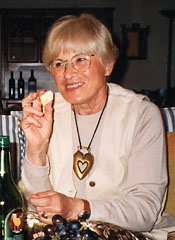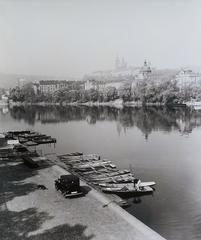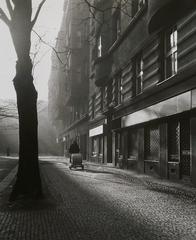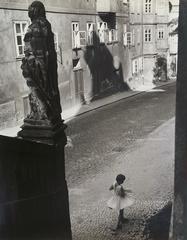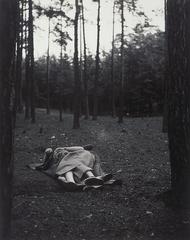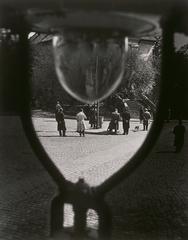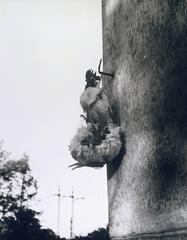|
I love Surrealism.
I really do. I like the absurd view and Surrealism is most close
to it –to combine things which don’t really go together
but yet somehow do anyway because that is the way life is –
absolutely absurd.
Eva
Fuka, 1999
|
The edges along each side of this
photograph give the impression that the photographer turned a corner and
just happened upon this scene. The poetry of every day life and the extraordinariness
of the ordinary are illustrated here. Fuka tried to capture these qualities
in her photographs as she stamped her individual style onto the larger
art movement called Surrealism. “It should be understood that the
real is a relation like any other,” wrote a French promoter of Surrealism.
“The essence of things is by no means linked to their reality, there
are other relations beside reality, which the mind is capable of grasping,
and which are also primary like chance, illusion, the fantastic, the dream.
These various groups are united and brought into harmony in one single
order, surreality . . .” (Aragon, Une Vague de Rêves
, 1924)
Strange and uncertain space was a device used by many Surrealists to
represent those other relations beside reality. Look at the looming shadow
on the building behind the dancing child. Is it a shadow of the statue
in the foreground or something outside of the frame of the picture? The
relationship between the shrouded old statue and the lively young girl
creates a strange mood. Although they are facing away from each other,
they are very much together in the space of the photograph. Does the statue
threaten the child or offer some kind of protection? These visual mysteries,
presenting themselves in everyday life and turning the ordinary into the
extraordinary, were themes that fascinated Eva Fuka.
|
